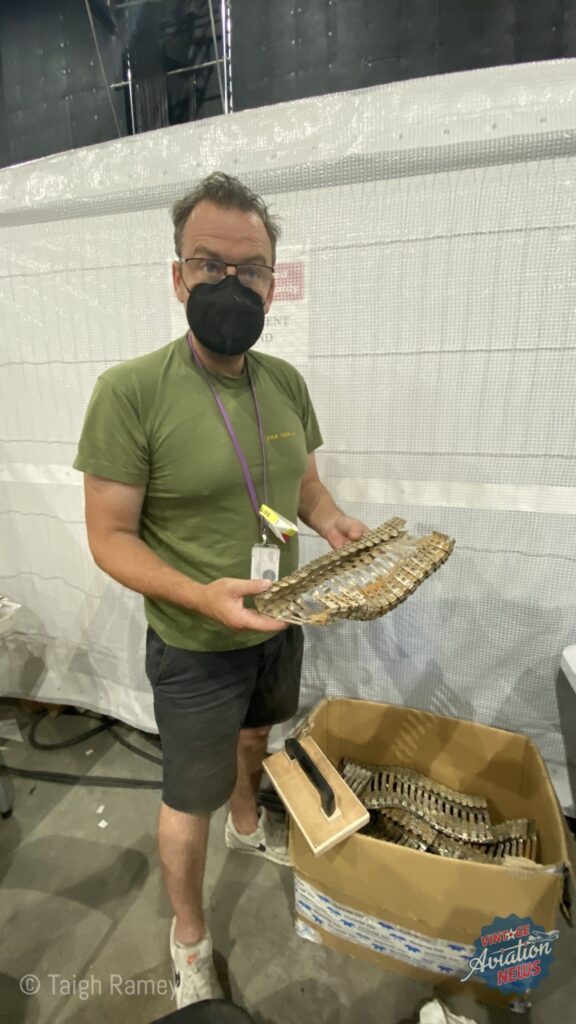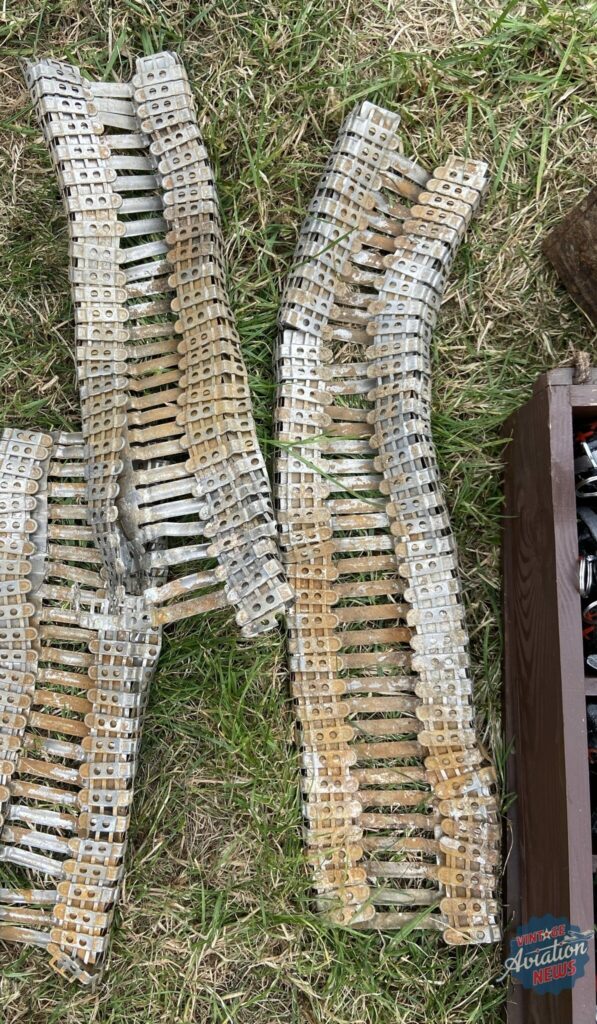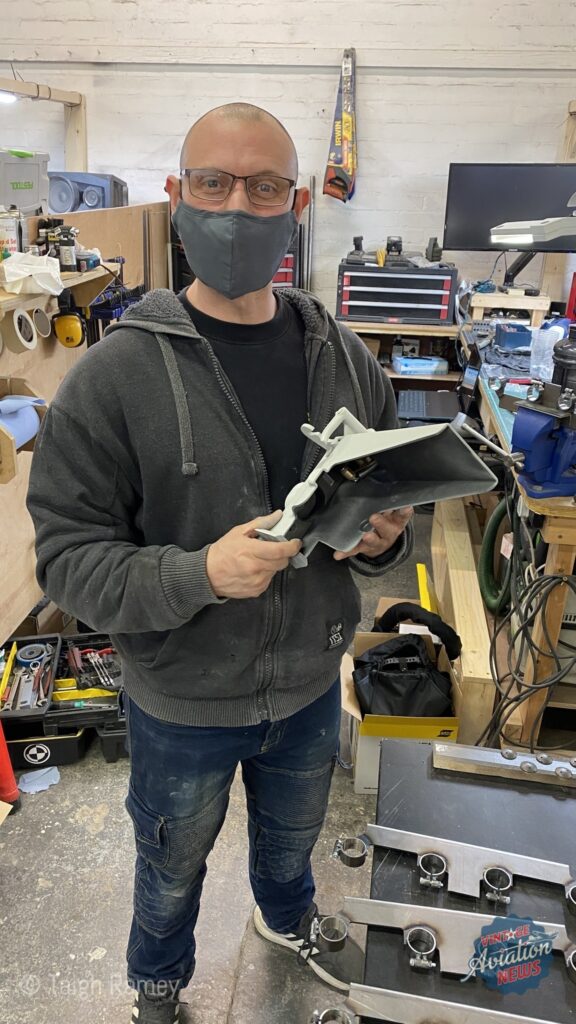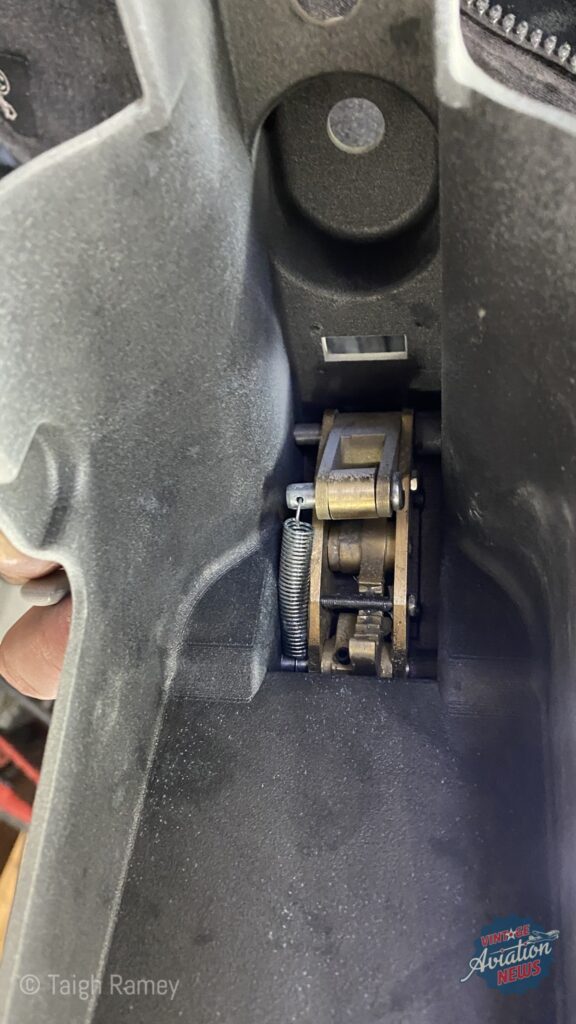Masters of the Air details: Gunnery. Taigh Ramey takes us though another inside story on Masters of the Air series.
By Taigh Ramey.
Once again, thanks to well-known warbird expert Taigh Ramey, we can take you behind the scenes with the current Apple TV+ Masters of the Air series. In this article, Taigh takes an expert look at the guns and gunnery in the series. While he doesn’t say so, Taigh is one of the few people today who has literal ‘hands on’ experience with these guns in these types of aircraft currently. Over to Taigh:
Guns. A lot of people have been asking about the guns used in Masters of the Air. I believe that full auto blank firing guns were going to be used originally. It turns out that the muzzle blast from blank guns could damage the sensitive screens used in the volume for the video walls, so they came up with another type of gun developed by a sharp special effects master. He made guns that operated on compressed air and would feed belted, projectile-less shells and links and spit out the empty shells from the bottom of the gun and the links out of the feed way just like the real guns would. The guns would recoil, and rattle and the muzzle flash would be added by VFX in post-production.
The guns worked well but fired slower than a real M2 50 cal at 600 rounds per minute. They did need a lot of tweaking and frequent reloading so some of the production staff were less than happy at the time needed to service the guns and keep them running. No good non-blank firing options exist for this kind of work so I thought that this was an impressive effort and ultimately looked good on screen.
Empty brass
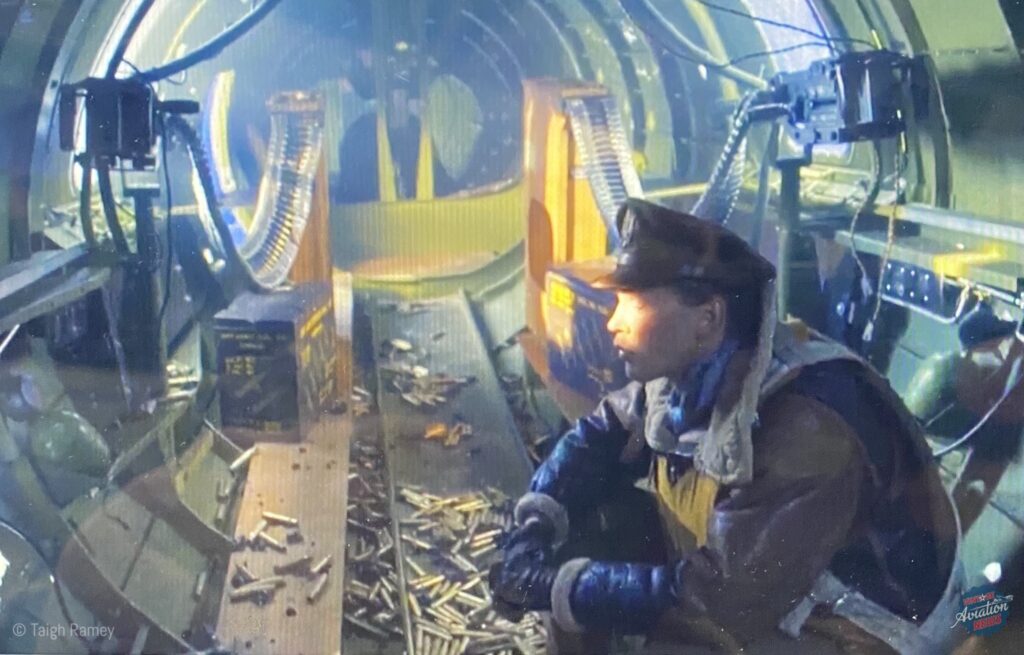
The shells and links dropping from the guns at a prodigious rate is a very important part in my mind as is the number of shells that should be all over the floor around the gunners. We were filming Regensburg which historically was a long running battle with the Luftwaffe so the amount of ammunition expended was amazing to say the least.
Each gun fires about 10 rounds per second so there are 10 empty shells and 10 links spitting out of each 50 cal gun per second. Imagine what the floor would look like and imagine walking all over those empty shells.
They actually made rubber empty shells and links painted perfectly to look like the real thing with the intention of people being able to walk on them and not have their feet flying out from under them like they would with the real thing.
At one point during filming, I couldn’t see enough shells on the monitors for the cameras, so I asked for more brass and I met resistance from one of the crew saying that they had already put some in. I had to pull up wartime images on my iPad to show them, and the director, just how bad it would look in the middle of battle so they could understand that just one half of a bucket of brass was not going to cut it. We needed at least 10 buckets so they stopped filming to fill up the floor with brass and links as it should be. The gunners should be wading through the brass around their boots.
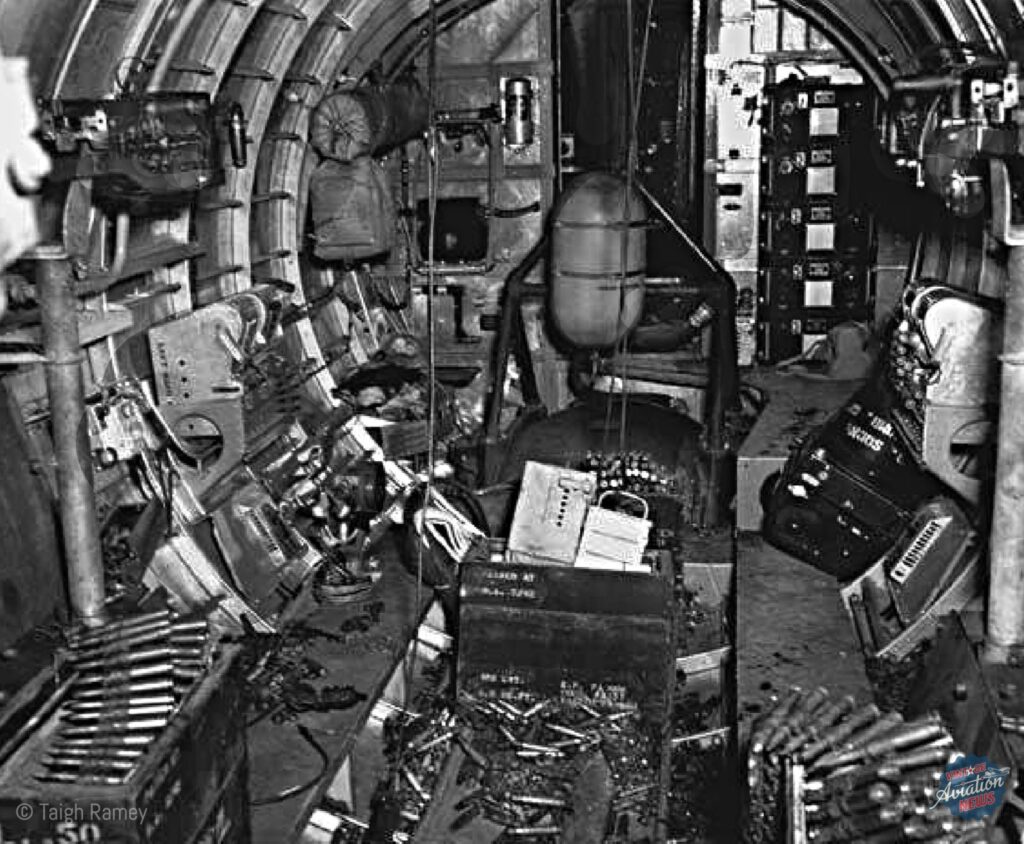
This was an eye opener for them, and they ended up filming a lot of scenes showing this dramatic aspect or aerial warfare. It sure looked good!
Feed chutes
Reproducing fully complimented B-17’s is quite a chore. Some items are harder to replicate than others. One of these hard parts to reproduce are the flexible feed chutes used for the ammunition to get from the ammo box to the gun. Since the gun is swinging all over the place so do the feed chutes. Dave helped supply some of these parts and set them up for each gun position just like in the blueprints. There is an open end for the top and a closed end meant for the bottom.
All of the feed chutes used in MOTA were the real deal. Most of it had been dug up in some of the airfield digs that have been going on over the last few decades at the old dumps in East Anglia. I even found some at a military show that I bought for the show as we needed all that we could come up with.
As you can imagine, the feed chutes that have been buried for 75 years, are pretty beat up. Their saving grace is that they were made from stainless steel so they didn’t corrode away like most other metals did but they were seriously bent and twisted. Dave and others made wood former’s to straighten them out and get them looking good once again. Dave had one chute that had heavy visible wear inside of it from all of the ammo that had passed through it during the war. For all we know, it could have actually been on the Regensburg raid! I thought it was really cool that original 8th AF ammo chutes were used in the series.
Gun Mounts
One of the hardest parts to find are the gun mounts or recoil adapters that the 50 cal guns were cradled in. The guns impart a lot of hammering shock load when fired and this would tear up the aluminum structure of the aircraft so they made these mounts so they would recoil and absorb the shock of the gun. These mounts (Bell E-11 and Edgewater E-12) are quite hard to find and when they do show up they get snapped up by collectors. Each B-17 would need 8 of these so BGI went into production and made them from scratch. Anything BGI does is impressive, and these were especially so. As I mentioned above, they originally intended to use actual firing 50 cal guns so these mounts needed to be fully functional and not just some kind of plastic replica. Check out the photos to see how beautiful they turned out.
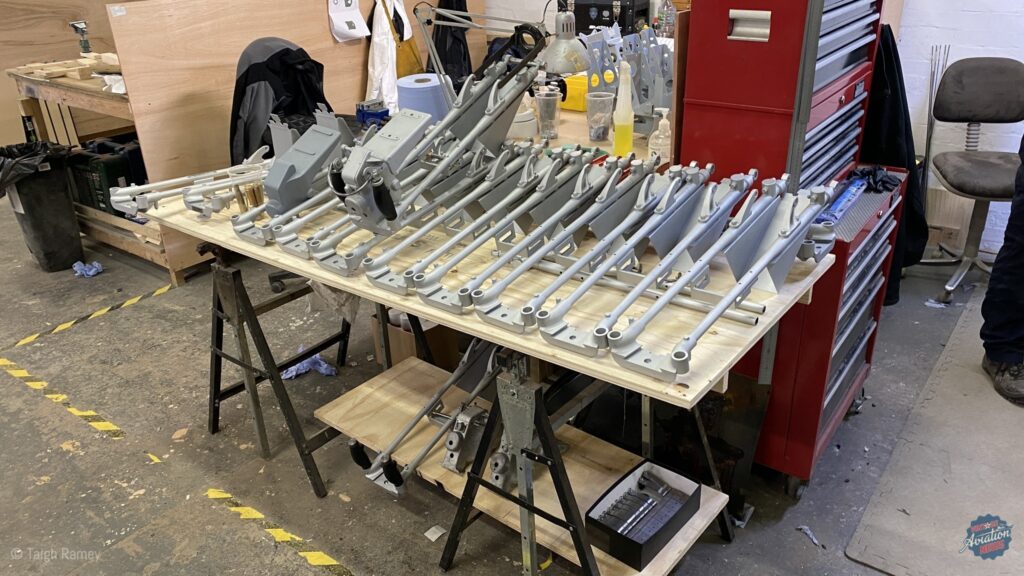
Frankly, to walk in and see a row of these rare mounts, all brand new, was quite a delight. There are a lot of collectors out there drooling heavily over these and many of the other props that were fabricated for the series.
One very cool aspect of being involved in this project was to see history come alive. I have been learning about this stuff since I could read and thankfully, I was able to get to know a lot of WWII veterans who lived it themselves. I have listened to their stories and have asked countless questions about how they did the things that they did.
It is quite another thing to see this stuff come to life with your own eyes. It answers some questions and generates a whole lot more. Getting down to the details is a lot of fun for us WWII nerds.
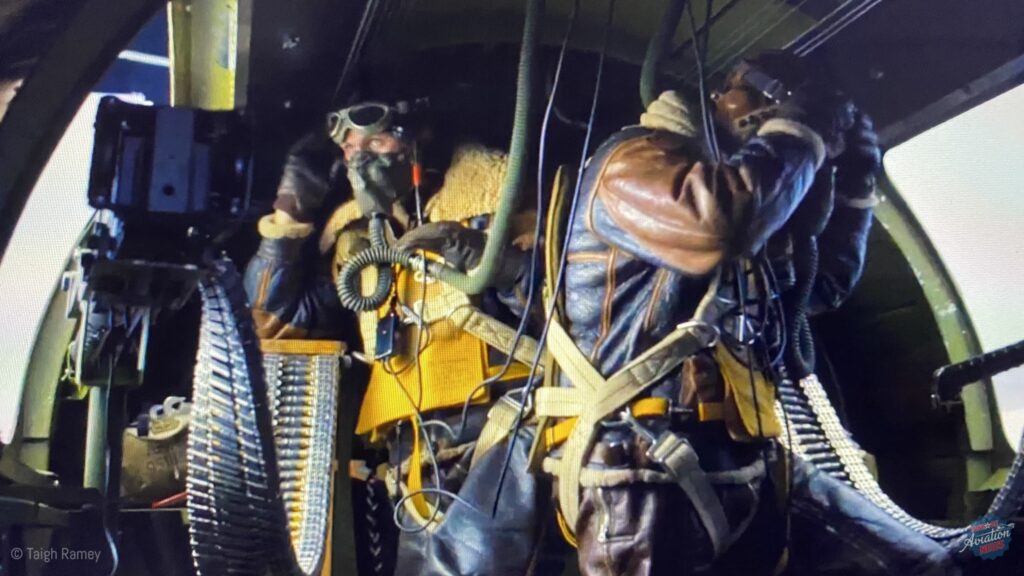
One aspect that came to life on the MOTA set involved the early B-17’s that had their waist gun windows straight across from each other. I had read and learned that this was a problem for the gunners and Boeing ended up staggering the waist windows so the gunners would not interfere with each other.
The MOTA B-17’s were the F models and when the actors were in place, with full flying gear, it was incredible to see just how crammed up they were around each other.
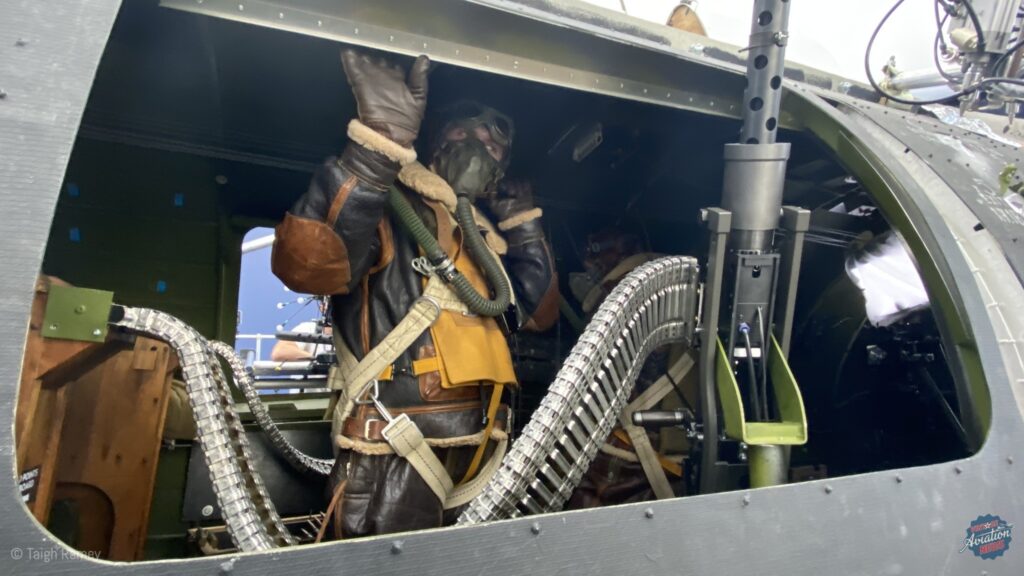
The other fascinating thing is all of the various connections that each gunner and crewman had. Each waist gunner, and all aircrew for that matter, would have four connections to the aircraft for: Oxygen, headphones, microphone and their electrically heated flying suit. All of these wires and hoses for each gunner connected up over their heads and hung down around them. Now imagine not only bumping to each other and swinging the guns and maneuvering in this cramped space with the wind from the open waist windows but keeping all of your life saving umbilical’s attached at the same time. It doesn’t take much to pull one of these out or break one off, which could be disastrous.
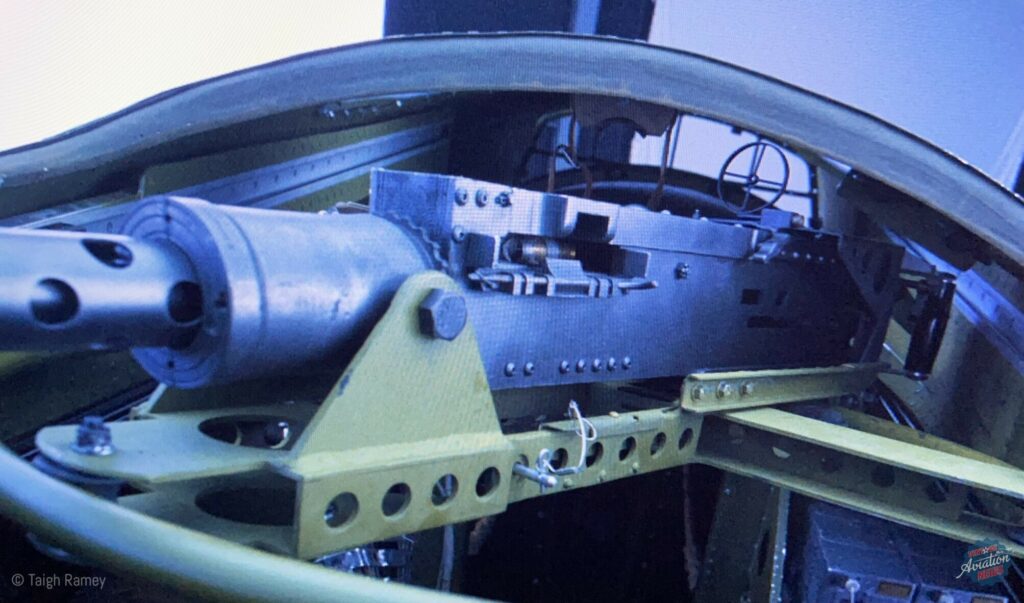
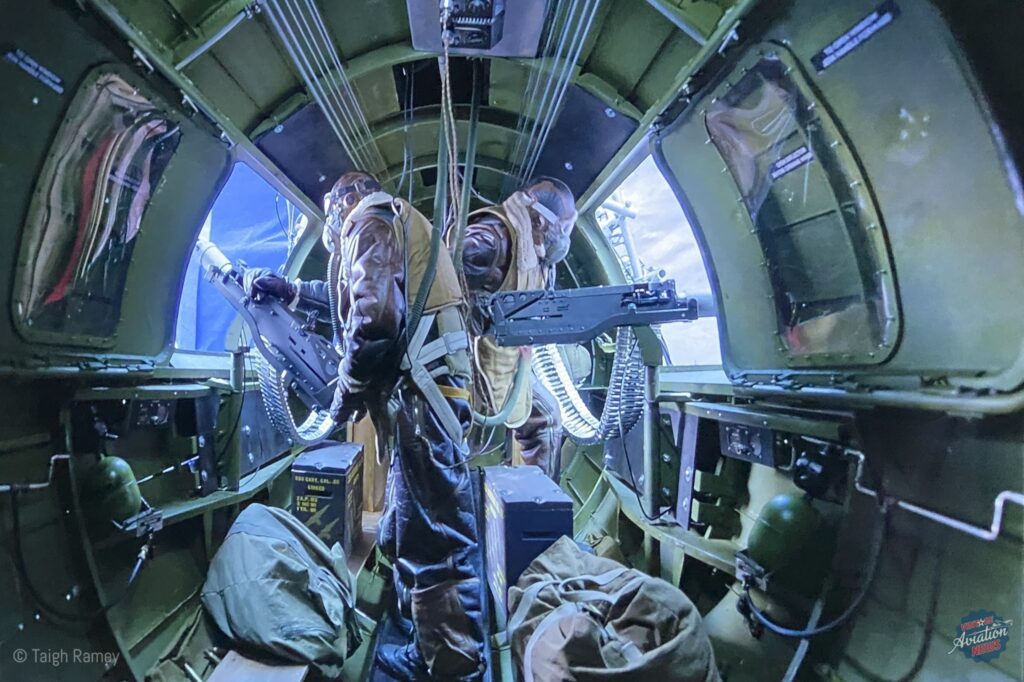
The actors on MOTA were constantly having trouble with this and needed to look out for each other just like they must have done in combat. We were also constantly looking at the monitors and trying to be sure that they were still plugged in.
A wonderful project that was a real honor to be involved with for sure. The devil was definitely in the details.
And a shameless plug: If any of you want to learn hands on with all of the equipment that the air and ground crew used please consider Bomber Camp. If you want to fly in a real B-17 and shoot the guns, ride in the ball turret and even drop a bomb with the Norden bombsight, then Bomber Camp is for you. May 3rd, 2024 in Stockton, Ca. Please spread the word. It’s tax deductible too!
Vintage Aviation News would like to thank Taigh Ramey for being able to see ‘behind the scenes’ of Masters of the Air. We have more to share from Taigh, but you can also experience his expertise ‘hands-on’, as he says above, at this year’s Bomber Camp , details are below:
, details are below:
Would you like to get a LOT closer to experiencing flying your mission in a legendary B-17 Flying Fortress? Young or old, you can live your dream at Bomber Camp ! Bomber Camp
! Bomber Camp was devised by this article’s author, Taigh Ramey, the founder of the Stockton Field Aviation Museum and avid WWII collector and history buff. Bomber Camp
was devised by this article’s author, Taigh Ramey, the founder of the Stockton Field Aviation Museum and avid WWII collector and history buff. Bomber Camp is much more than a “fantasy camp”. It is an immersive WWII living history experience allowing you to step back in time to train for a bombing mission and then to fly it, for real.
You can shoot the guns, ride in the ball turret, and drop a bomb with the famous Norden bombsight. This once-in-a-lifetime opportunity can be yours. Enlist now! www.bombercamp.org.
is much more than a “fantasy camp”. It is an immersive WWII living history experience allowing you to step back in time to train for a bombing mission and then to fly it, for real.
You can shoot the guns, ride in the ball turret, and drop a bomb with the famous Norden bombsight. This once-in-a-lifetime opportunity can be yours. Enlist now! www.bombercamp.org.

